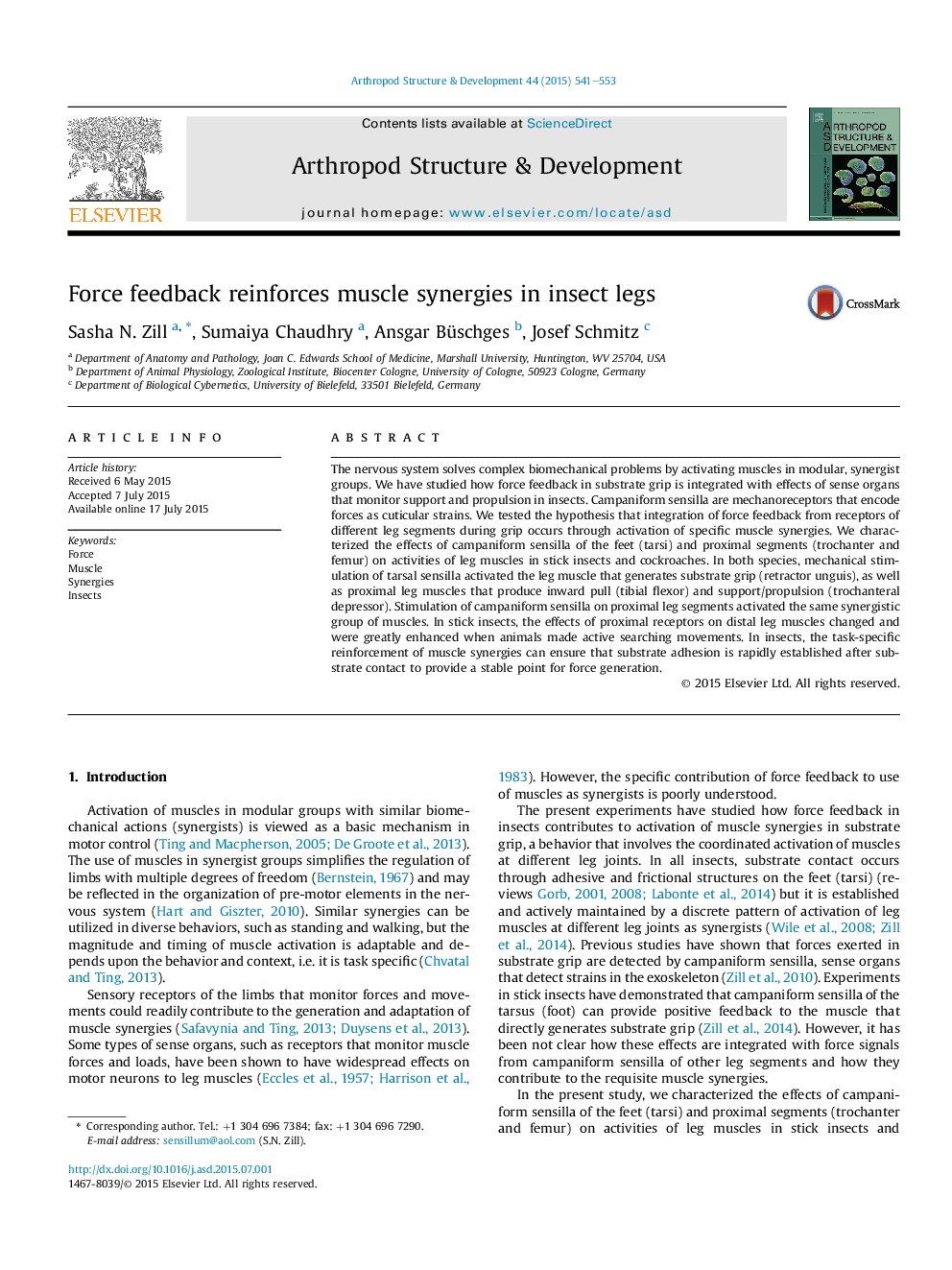| Article ID | Journal | Published Year | Pages | File Type |
|---|---|---|---|---|
| 2778573 | Arthropod Structure & Development | 2015 | 13 Pages |
•We characterized the effects of force feedback in control of synergist muscles.•Campaniform sensilla are mechanoreceptors that encode muscles forces and loads.•Tarsal (foot) receptors reinforced muscle synergies that establish substrate grip.•Sensilla of proximal leg segments activated the same muscle synergies.•Force feedback can contribute to the control of leg muscles as synergists.
The nervous system solves complex biomechanical problems by activating muscles in modular, synergist groups. We have studied how force feedback in substrate grip is integrated with effects of sense organs that monitor support and propulsion in insects. Campaniform sensilla are mechanoreceptors that encode forces as cuticular strains. We tested the hypothesis that integration of force feedback from receptors of different leg segments during grip occurs through activation of specific muscle synergies. We characterized the effects of campaniform sensilla of the feet (tarsi) and proximal segments (trochanter and femur) on activities of leg muscles in stick insects and cockroaches. In both species, mechanical stimulation of tarsal sensilla activated the leg muscle that generates substrate grip (retractor unguis), as well as proximal leg muscles that produce inward pull (tibial flexor) and support/propulsion (trochanteral depressor). Stimulation of campaniform sensilla on proximal leg segments activated the same synergistic group of muscles. In stick insects, the effects of proximal receptors on distal leg muscles changed and were greatly enhanced when animals made active searching movements. In insects, the task-specific reinforcement of muscle synergies can ensure that substrate adhesion is rapidly established after substrate contact to provide a stable point for force generation.
